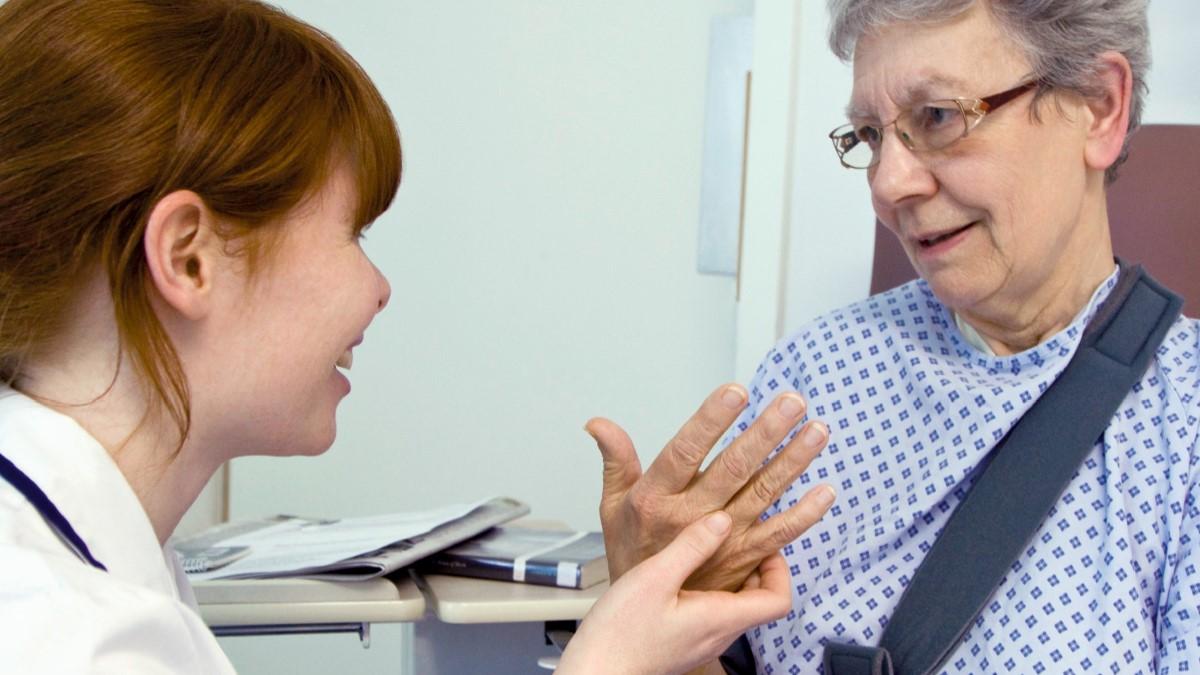Read on to find out about the latest in research from the NIHR

The need
Ageing populations, and increasing numbers of people living with one or more long-term conditions, are fuelling the need for rehabilitation. In 2017, the World Health Organization recognised that many countries are not equipped to respond to existing rehabilitation needs. It issued a call for action, Rehabilitation 2030 which encourages countries to scale up rehabilitation as a health priority.
Since then, the Covid-19 pandemic has amplified demand. Many people need rehabilitation for ongoing symptoms and disability after contracting Covid-19. Some people with pre-existing long-term health conditions have deteriorated faster than usual during the pandemic. This may be due to the effects of having Covid-19, as well as reduced social contact or disrupted rehabilitation services.
The Community Rehabilitation Alliance is a group of charities and professional bodies that champion equal access to high quality rehabilitation. They are calling on the UK government to fund an innovative national strategy for rehabilitation.
Optimising rehabilitation
To achieve this ambition, rehabilitation services need to be based on robust evidence. This collection brings together lessons from NIHR-supported research, summarised in plain language as NIHR Alerts. They explore ways of delivering clinically and cost-effective rehabilitation services.
A key issue in delivering optimal rehabilitation services is the limited numbers of knowledgeable, supportive and trusted clinicians. Innovative approaches are required. Two studies took a fresh look at delivering rehabilitation involving other staff members. One study successfully trained non-specialist physiotherapists and women’s health nurses to effectively deliver rehabilitation for women with pelvic organ prolapse. The researchers suggest a model in which specialist physiotherapists determine a woman’s suitability for rehabilitation and take on the most complex cases themselves. They then provide training and support to other non-specialist staff, who treat women with more straightforward needs.
Another trial introduced the role of rehabilitation assistants. They delivered a home-based rehabilitation programme, called COmmunity based Rehabilitation after Knee Arthroplasty (CORKA), to people at risk of poor recovery after knee replacement surgery. In a trial, CORKA had similar effects to traditional outpatient physiotherapy. When all costs to society were considered, total costs were lower for CORKA than for standard care (£316/person).
New research evaluated a new model of care called ‘short-term integrated palliative care (SIPC)’. SIPC was designed to meet the complex needs of people severely affected with long-term neurological conditions. It included a holistic assessment, care planning and referral to, or liaison with, other care providers. People receiving SIPC achieved similar health outcomes to those receiving standard care but, crucially, despite the additional person-centred care, costs for each person who received SIPC were £562 less than the other group.
Online training for health professionals might also help overcome skills shortages and could be cost saving for healthcare providers.
One study focused on the SARAH programme – exercise-based rehabilitation for people with hand and wrist disability due to rheumatoid arthritis. Therapists were initially trained face-to-face to deliver the programme. The researchers then designed an online therapist training programme called iSARAH. After completing iSARAH, almost all (99%) therapists felt confident and capable of delivering the programme. Data from 97 patients suggested that they improved to a similar degree to the people in the original clinical trial and were not disadvantaged if their therapist had been trained online.
Moving forward stronger
A coordinated approach for the rehabilitation of people with long-term conditions is needed.
The approach must embrace:
- the best evidence, used to optimise the delivery of rehabilitation
- robust leadership to support novel, localised, needs-led services
- innovative roles and training methods to build a skilled workforce
- a research agenda shaped to inform best practice.
This collection provides examples of research that explores some new ways to deliver rehabilitation. This kind of research will enable us to ‘move forward stronger’ and address the unmet need for rehabilitation.
The full version of this Collection was published on the NIHR evidence website in September.
References
- Cieza, A., et al., Global estimates of the need for rehabilitation based on the Global Burden of Disease study 2019: a systematic analysis for the Global Burden of Disease Study 2019. The Lancet, 2020. 396(10267): p. 2006-2017.
- Gimigliano, F., et al, The World Health Organization Rehabilitation 2030: a call for action. European Journal of
- Physical Rehabilitation and Medicine, 2017. 2017 (2): p. 155-168.
- People with chronic fatigue syndrome want to be taken seriously and to receive personalised, empathetic care.
- Pelvic floor muscle training can be delivered by appropriately trained non-specialists for women with prolapse, research finds.
- Home-based rehabilitation after a knee replacement is as effective as physiotherapy.
- Short term palliative care reduced costs without compromising quality for people with neurological conditions.
- Hand strengthening and stretching for people with rheumatoid arthritis: online training helps therapists deliver an exercise programme.
Expert view:
Suzanne McIlroy is a consultant physiotherapist in spinal neurosurgery and Dunhill Medical Trust research training fellow at King’s College Hospital.
Suzanne is the secretary of the Advanced Practice Physiotherapy Network and secretary of the National Back Pain Pathway clinical network.
I was encouraged to read this NIHR collection on rehabilitation. It is timely and important as healthcare services resume and expand their provision to meet the increased demand for rehabilitation following the Covid-19 pandemic.
The two studies that are particularly relevant to my practice evaluated new models of care that trained non-specialist staff or rehabilitation assistants to deliver specialist rehabilitation services. These studies evaluated innovative potential solutions to how we could adapt our workforce and service delivery models to ensure rehabilitation is fit for the future and, crucially, cost-effective.
As a profession, we need to embrace the learnings from this NIHR collection and continue to explore how we can optimise rehabilitation to address the inequity of access and variability in provision.
This should include developing roles throughout the physiotherapy workforce, including physiotherapy support staff and advanced practitioner roles, across long-term conditions and optimising how we deliver tele-rehabilitation.
Number of subscribers: 1




































